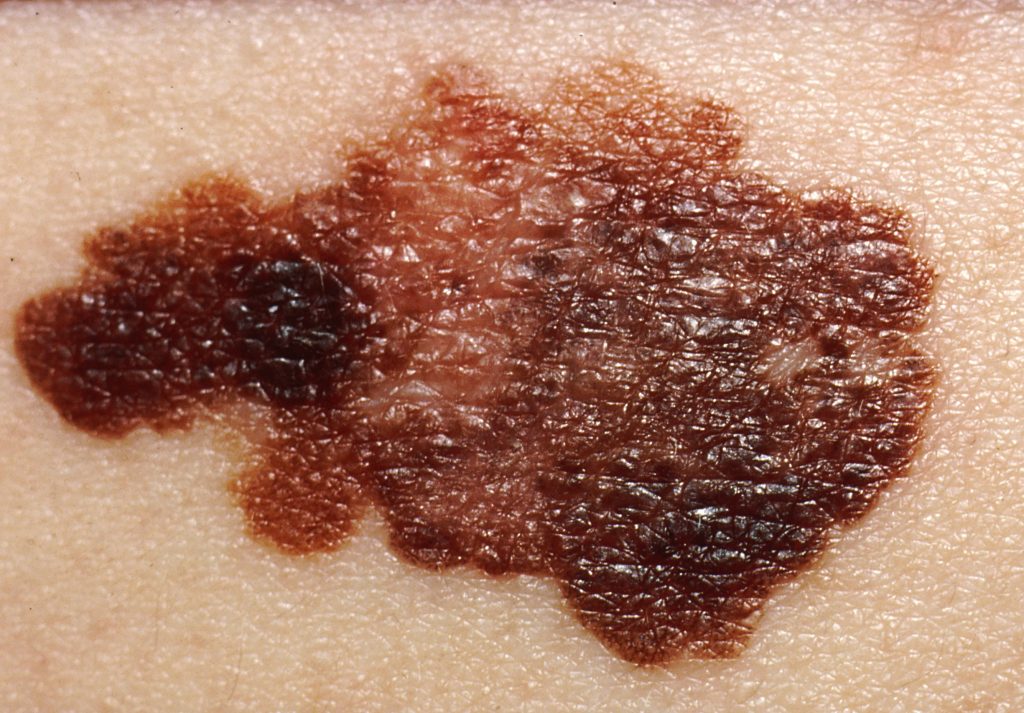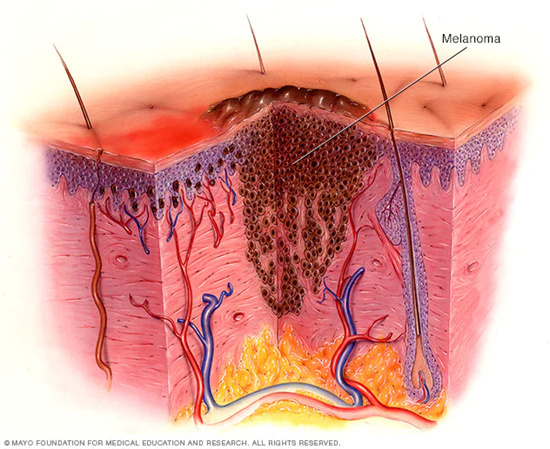In recent decades there has been a steady increase in the incidence of skin cancer worldwide. Although the exact cause of this trend is not fully understood, it is believed to be due, in part, to increased exposure to ultraviolet (UV) radiation from the sun.
It is the most common type, with more than three million cases diagnosed yearly. The three most frequent skin cancer types are basal, squamous, and melanoma.
Skin cancer begins in the cells that make up the outer layer of your skin (epidermis). For example, one type of skin cancer called basal cell carcinoma begins in the basal cells, which causes skin cells to push older cells continually to the surface. As the new cells move upward, they become flat and scaly, where a skin cancer called squamous cell carcinoma can develop.
Basal and squamous cells are the most commonly diagnosed, accounting for more than 95% of all skin cancers. They are generally considered relatively low risk and are highly treatable. Melanoma, on the other hand, is the more severe type. It accounts for less than 5% of all diagnoses but is responsible for the vast majority of deaths from melanoma. Melanoma can spread rapidly and aggressively to other body parts if not detected early and correctly.
More information on this link
Ultraviolet radiation – OMS

Sun exposure is one of the leading causes. Ultraviolet (UV) radiation from the sun damages the DNA of skin cells, which can cause them to mutate, causing the cells to multiply uncontrollably, which in turn can lead to the development of cancer. For this reason, it is essential to take measures to protect yourself from the sun, especially during the most intense hours, wear protective clothing and apply a broad-spectrum sunscreen with a sun protection factor (SPF) of at least 30. If sun exposure cannot be avoided, it is essential to wear clothing that protects the skin, such as hats, long-sleeved shirts and pants.
Regular skin cancer screening is also recommended, as this can help detect melanoma at an early stage and survival rates are very high if it is detected early. However, if detected at a late stage, melanoma can be very difficult to treat and can lead to death. For this reason, it is essential to have regular examinations and to consult a physician if skin changes are detected.
Melanoma

Melanoma is a type of skin cancer characterized by the abnormal and uncontrolled growth of pigmented skin cells. It occurs when the pigment-producing cells that give color to the skin become cancerous.
Symptoms include unusual and new growths, or changes in an existing mole. Melanomas can appear anywhere on the body, thus developing in any area of the skin, but it is more common in areas that have been exposed to the sun on a regular basis. Melanoma can also appear in the eyes or intestine, but this is less common.
Treatment may include surgery, radiation therapy, drugs and, in some cases, chemotherapy.
It can be easily detected if you know what to look for. Melanoma usually looks different from other spots or bumps on the skin. You can often see that it is black, brown, or gray in color; that it has irregular edges; or that it looks different from other spots in the same area.
If melanoma is detected at an early stage, survival rates are very high. However, if detected at a late stage, melanoma can be very difficult to treat and can lead to death. For this reason, it is vital to have regular skin cancer screenings and to consult a physician if skin changes are detected.
Risk factors for melanoma
Risk factors for melanoma include, in addition to sun exposure, a family history of melanoma, having fair or sun-sensitive skin, and having spots or bumps on the skin. Other risk factors may include age, gender, medical history and the presence of specific genes.
Another risk factor is having a family history of melanoma. If someone in the family has had melanoma, people in the same family are more likely to develop melanoma.
People with sensitive skin are more prone to burn and damage their skin when exposed to the sun.
Skin cancer spreads in Europe with 7.3 million cases
Some 1.71 percent of the adult European population has skin cancer, which translates into about 7.3 million citizens of the continent having the disease.
“Skin cancer is part of the 40 percent of cancers that are preventable and whose incidence we could reduce considerably.”
According to the World Health Organization
According to the latest WHO data published in April 2020 deaths caused by skin cancer in Germany have reached 4,055 (0.58% of all deaths). The age-specific mortality rate is 2.02 per 100,000 population. Germany ranks 84th in the world.
“We will now see the effects of the ’70s and ’80s, when tanning was in vogue,” Schadendorf said during a conference of the German Society of Dermatology in Berlin.
More information through this PDF:
Skin Cancer Treatments
Sources:
